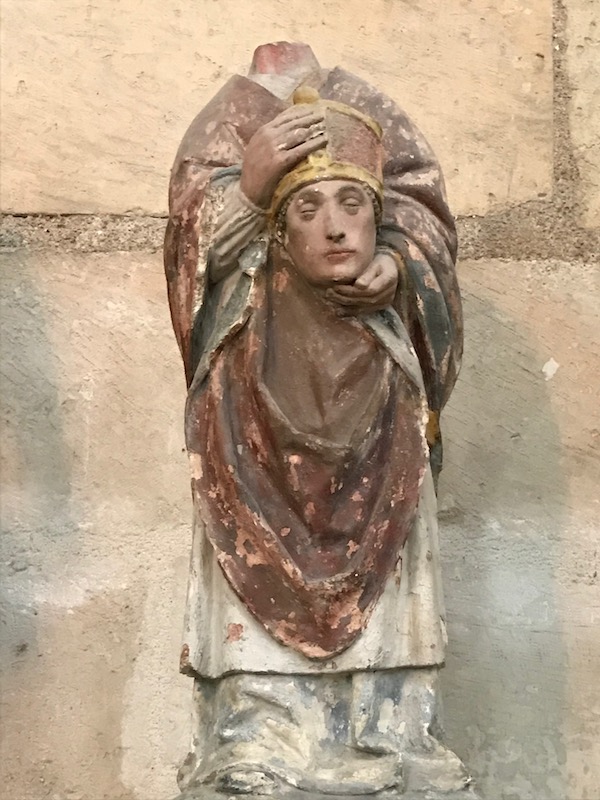Our Blog - Auxerre, France
We based ourselves just outside of Auxerre for a few days, which let us spend a little time in the area without packing up and moving hotels every night. Near where we parked, we saw quite a few half-timbered houses from the middle ages. In front of the houses in the 3rd picture is a fountain surmounted by a statue of Cadet Roussel. The city center is dotted with these wooden sculptures by the artist Francois Brochet. This one in particular, of Cadet Roussel, is a character in an 18th century song that is from Auxerre.

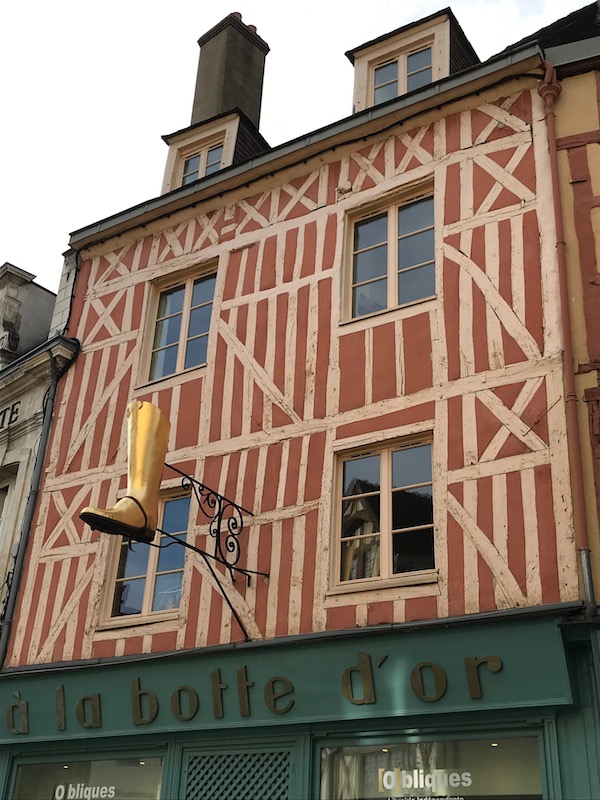

Around 640, the bishop of Auxerre created a monastery outside of the city wall. However, being outside of the wall, they were often attacked and the monks left at the end of the 8th century. Around 1130, a number of monks returned and the Église Saint-Eusèbe was rebuilt, then destroyed, then rebuilt, and then partially burned down in 1216. It was reconstruction starting in 1530 in Gothic style according to regional traditions, although its decor is Renaissance style. You can see the very high ceilings, held up with the supporting flying buttresses.


The west portal dates from the 13th century, with this door from 1633 (you an see the "16" from the date on the right-hand side of this door. In bas-reliefs on the doors represents Saint Laurent and Saint Eusebius.

The nave is large and spacious, and you can see the many Gothic (pointed) arches.
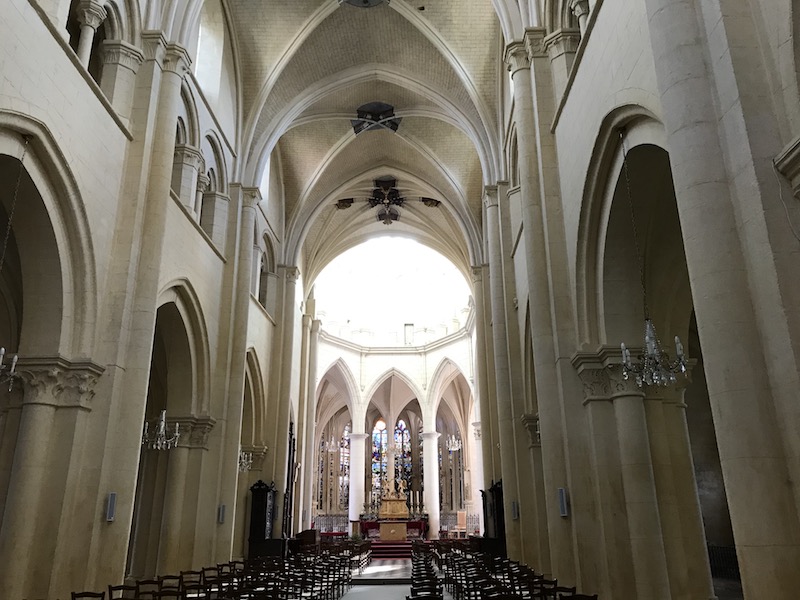

The high altar and its tabernacle in gilded wood from the 18th century.
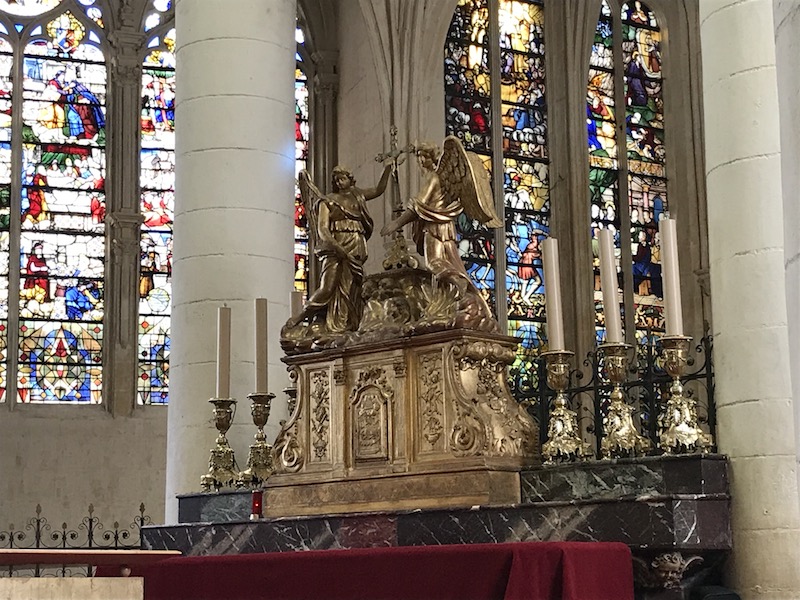
The impressive part of the church (for me) was the stained glass windows from the 16th, 17th and 18th centuries. This 17th century window illustrates the famous biblical story of Joseph. These are the bottom 2 sections showing his brothers bringing their young brother's bloody tunic to their father Jacob to make people believe in his death and then above it shows Joseph in Egypt. Putiphar's wife tries to seduce him, but he runs away.

This is one of the older windows, from 1540 the resurrection of Jesus Christ.

Another window from 1540 shows the decapitation of Pope Sixte, who was one of the first victims of the persecutions under Emperor Valerian in 258.

This 16th century stained-glass illustrates scenes from the life of Saint Laurent.

The back of the church where the doors are, with the organ above.

We were only able to see the Church of Saint-Pierre from the outside. The style is mostly Gothic with a 16th century tower and 17th century classical façade. The entrance gate to the old abbey was probably built in 1530-1540. It is strongly inspired by the Castelnuevo portal in Naples. The two characters represented are Ceres and Noah. An association between mythological and biblical tradition, typical of the Renaissance period.


The red doors pop out, and have some amazing detail. I show one of the smaller doors first, with the detail of the top with the date of 1648, then the semi-circular tympanum over the main double-doors.
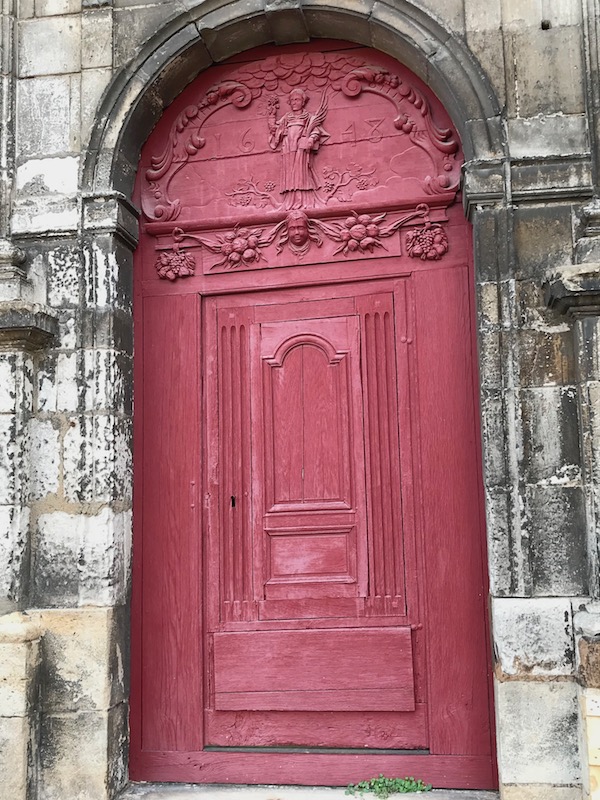
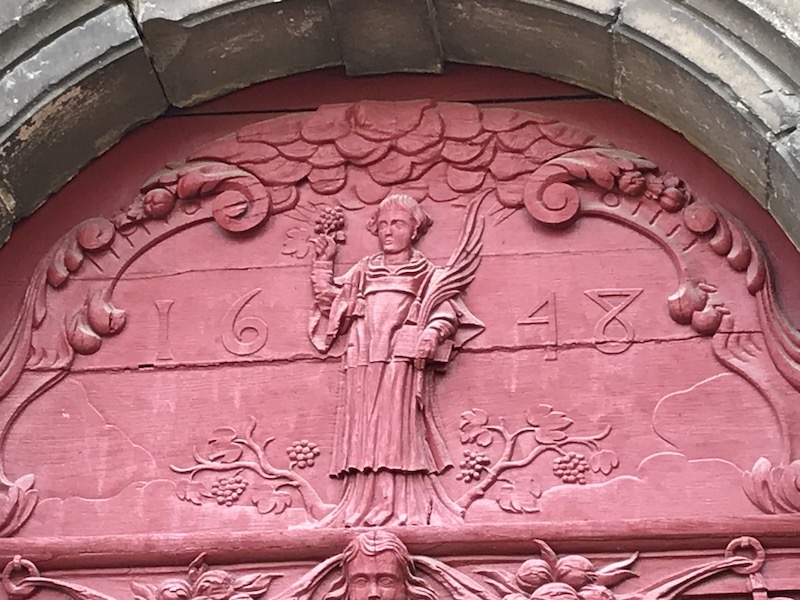
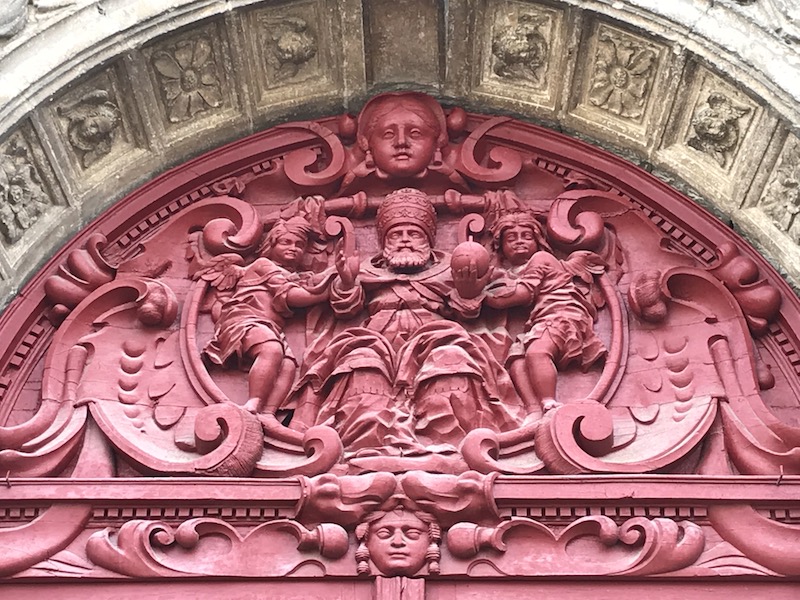
The first cathedral here was built in the 4th century but it burned down and was rebuilt in the 9th century. That was destroyed by fire again a century later. A Romanesque cathedral followed in the 11th century, but only the crypt of that church remains. It was replaced by the current Gothic cathedral, Cathédrale Saint-Étienne, completed three centuries later. The large portals illustrate the great episodes of the Old and New Testaments: Genesis and Noah's journey (to the north); salvation and Saint John the Baptist (to the south); the Last Judgment (center).





Here you can see the very VERY tall nave, with gothic arches on the aisles and a vaulted ceiling with ribs. The nave has 3 levels: large arcades, blind triforium and high windows. It is built in a radiant Gothic style, so there are no capitals at the level of the columns of the large arcades.

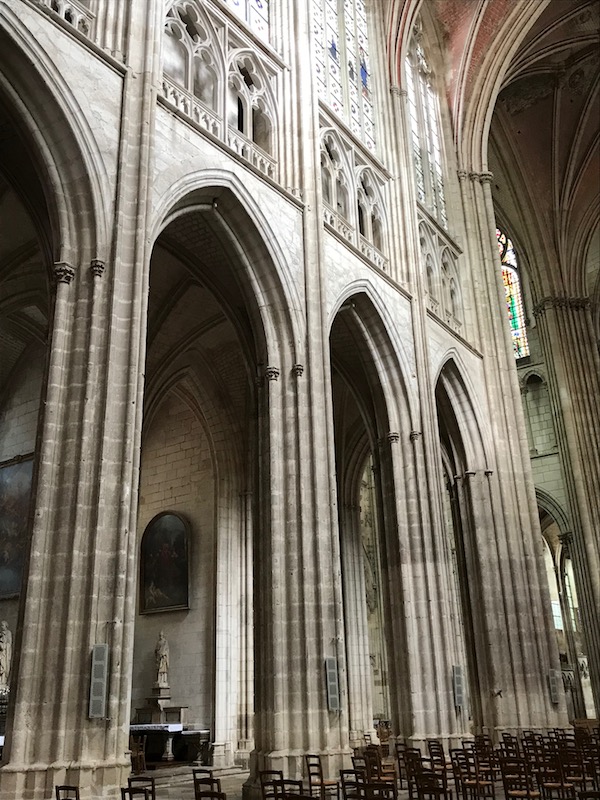
The large glass rosettes in the North and south transepts are from the 16th century,


Of the many stained glass windows, I thought this one with Jeanne d'Arc (Joan of Arc) representing the liberation of Orleans was one of the nicest.

The Abbaye Saint-Germain is an ancient Gothic abbey with flying buttresses, built on top of the tomb of St Germain, the 5th-century bishop who made Auxerre an important Christian center. By medieval times, it was attracting pilgrims from all over Europe.

The 12th century tower of Saint-Jean overlooks all the buildings with its imposing stone spire with eight convex sides.


The nave of this abbey church looks very much like the Cathedral, although the altar is slightly different.



The chapter room of the monastery has really well-preserved ribbed vaults and very detailed decorations around the entry door.

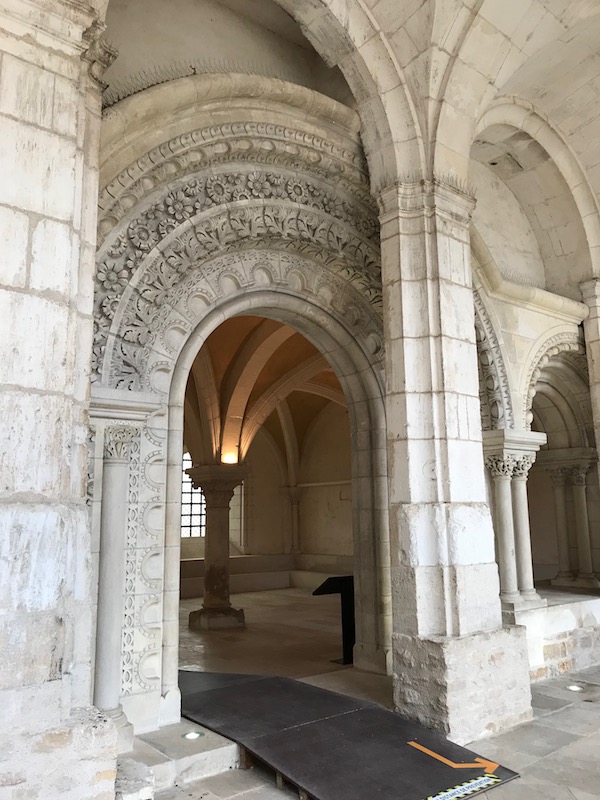
There is a piece of decoration from what was in front of the altar, which shows Saint Nicholas, the crucifixion of Saint André, the martyrdom of Saint Laurent, and Saint-Germain.
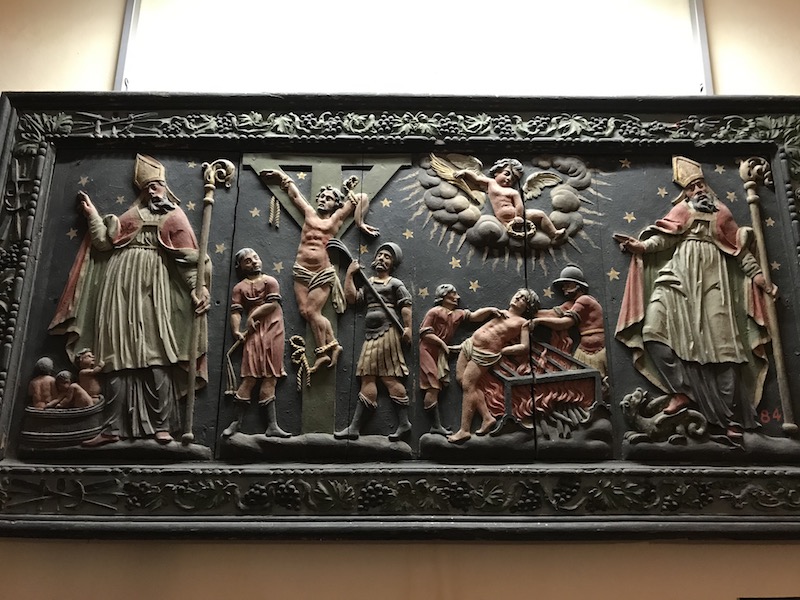
This is a silk tunic supposedly from Saint Germain from around the 11th century.

Another treasure in the church is a 17th century oil painting. The scene take place in 429, when Saint Germain was making his first voyage in Great Britain and meets up with the young woman who would become Sainte Geneviève.

A statue of Saint Denis, the first bishop of Paris who, at the end of the 3rd century, was beheaded. Dating from the 15th century, it is painted stone and comes from a different church, the Eglise in the town of Sacy.
